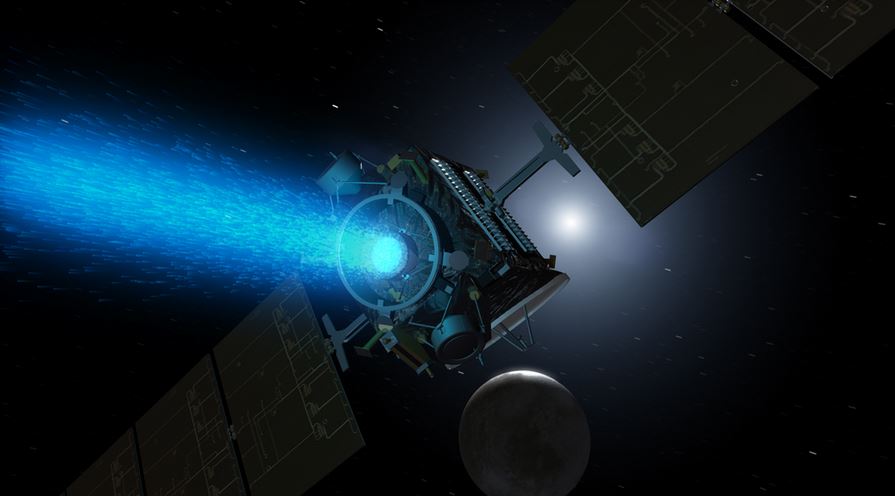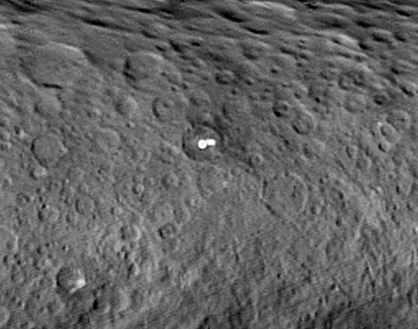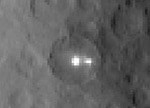The Dawn probe, launched by NASA in 2007, is about to start orbiting Ceres, the dwarf planet made of ice and rock that lies in the asteroid belt which orbits the Sun between Mars and Jupiter. Ceres is the only body in that belt that is completely spherical.
Ceres is 590 miles (950 km) in diameter, and contains about one third of the mass of the asteroid belt.
Perhaps, now that it is nearer, we can find out what the mystery bright lights on its surface are. When the probe was nearly 29,000 miles from Ceres, two bright lights were seen next to each other in a crater basin.
Scientists suggest they could be plumes of ice volcanoes, or the result of impacts that exposed the planet’s interior.

This artist’s concept shows the Dawn probe approaching the dwarf planet Ceres. Dawn travels through space using ion propulsion, in which ions are accelerated out of an engine, giving the spacecraft thrust. The xenon ions glow with blue light. (Image: Jet Propulsion Laboratory)
Does Ceres have an ocean?
NASA says it wants to find out whether Ceres is covered in an icy crust with an ocean underneath.
When Dawn enters orbit around Ceres on Friday, March 6th, it will be the first mission ever to successfully visit a dwarf planet.
Robert Mase, project manager for the Dawn mission at NASA’s Jet Propulsion Laboratory in Pasadena, California, said:
“Dawn is about to make history. Our team is ready and eager to find out what Ceres has in store for us.”
Jim Green, director of NASA’s Planetary Science Division at the agency’s Headquarters in Washington, said:
“Studying Ceres allows us to do historical research in space, opening a window into the earliest chapter in the history of our solar system. Data returned from Dawn could contribute significant breakthroughs in our understanding of how the solar system formed.”

Scientists cannot explain what the two mysterious bright spots are on the surface of Ceres. (Image: Jet Propulsion Laboratory)
Dawn started its final approach phase toward the dwarf planet in December 2014. It has taken several optical navigation images and made two rotation characterizations, allowing observations of Ceres to be made through its full nine-hour rotation.
Since January 25th, Dawn has been sending the highest-resolution pictures of Ceres ever captured. As it gets nearer they will be even better, says NASA.
Named after a Roman goddess
Ceres was first spotted in 1801 by Sicilian astronomer Father Giuseppe Piazzi in Palermo, though at the time it was considered a planet. As more celestial objects were found in the same region, they became known as minor planets or asteroids.

Father Giuseppe Piazzi pointing at his new discovery Ceres. (Image: Palermo Astronomical Observatory)
According to the Jet Propulsion Laboratory (JPL):
“Ceres was initially classified as a planet and later called an asteroid. In recognition of its planet-like qualities, Ceres was designated a dwarf planet in 2006, along with Pluto and Eris.”
Ceres is named after “Ceres”, the Roman goddess of agriculture and harvests. Its craters are named after gods and goddesses of vegetation and agriculture from mythological stories.
NASA Video – Dawn approaches Ceres

